The Best Window Tint Brands

Tinting your car’s windows has a lot of benefits besides adding some privacy and elegance to your vehicle’s looks. Another obvious benefit of window tint is to keep your interior nice and cool, but it also blocks out harmful UV rays, helping prevent premature wear of your interior. It can also help reduce brightness and glare while driving, reducing eye fatigue on long trips. And in extreme cases, tint can also hold glass pieces together if any of your windows shatter.
Typically, you’ll want window tint to be installed by a professional, but that’s not exactly the most affordable route. If you love do-it-yourself projects, there are several companies that sell rolls of window tint or pieces cut specifically for your vehicle. It does take a bit of patience to install window tint, but if you’re up to the task, this article will recommend five brands of quality material as well as go in depth on how to choose the right tint for your car, and some tips on how to install your window tint.
For more information on car window tint, refer to our table of contents.
Table of contents
Lexen offers one of the most popular pre-cut tint kits on Amazon with an affordable price. These kits are vehicle specific, so buyers have to specify the year, make, model, and body type of the vehicle when purchasing. Available tint shades include 50, 35, 15, and 5 percent. Lexen’s pre-cut kits use high quality, 2-ply (1.5 mil thickness) non-reflective film that is scratch resistant and capable of blocking out 99 percent of UV rays. They can be purchased as a complete kit that covers all windows, or a more affordable kit that excludes the back windshield. The company also offers a universal sun strip for the front windshield, or a standalone piece for the back windshield.
In addition to pre-cut kits, Lexen offers rolls of its 2-ply dyed tint material in 45-percent shade that is 20-inches long by either 10 feet or 100 feet. A more expensive option from Lexen is a 40 inch by 100 foot roll of 35-percent 2-ply premium carbon tint.
MotoShield Pro
A more premium offering comes from MotoShield Pro, which sells advanced Nano Ceramic tint film. The company also offers pre-cut kits for a wide range of applications, and buyers can choose from 5, 15, 25, 35, 50, and 70 percent. Choices for kits include all side windows, all windows, front windshield only, just the front side windows, and even single piece replacements for a specific side window. There is also a kit for two side windows and the rear glass for pickup trucks.
MotoShield Pro also offers rolls of its nano ceramic tint film at 5, 15, and 70 percent. The rolls are all 100-feet long, but buyers can choose between 20-inches wide and 40-inches wide.
True Line Automotive
One company that specializes in pre-cut kits for specific vehicles is True Line Automotive. Instead of having to contact the company with your year, make, model, and body type, True Line Automotive has hundreds of listings so you know you’re purchasing a product that’s specifically made for your car. Most of these kits include tint for all side and back windows (excluding windshield), using high quality 1-ply automotive tint. Shade choices include 5, 20, 35, and 50 percent. The company says no cutting is required to install these pre-cut kits.
True Line Automotive also offers separate sun visor window tint strips for the front windshield for various makes and models, as well as full windshield tint kits.
The Black Box Tint
Similar to True Line Automotive, The Black Box Tint has hundreds of pre-cut tint kits for various makes and models. The company offers three different models of tint: Alpine, Ultimacool Duo, and Ultimacool. The top-of-the-line Alpine features Nano Ceramic film and spectrally selective coating, using 1.5-mil, 2-ply structure. This results in superb heat rejection, incredible durability, and comes with a lifetime warranty.
The Ultimacool Duo is the mid-range option, featuring duo layers for higher heat rejection and extra durability. Instead of using Nano Ceramic film however, the Ultimacool Duo features color stable dyed film, but it is a 1.5-mil, 2-ply structure. It also comes with a lifetime warranty.
The most affordable option from The Black Box Tint is the Ultimacool, which offers good heat rejection. It’s also a color stable dyed film, but it’s 1-ply, 1.0 mil thickness. It comes with a three-year warranty.
All three models of tint blocks 99 percent of UV rays, is electronics-signal friendly, and features scratch resistance coating. Most of the tint kits from The Black Box Tint are available in 5, 20, 35, 50, and 70 percent.
Mkbrother
If you’re looking for affordable tint, Mkbrother has a nice lineup of film rolls, as well as some pre-cut packages. The tint is available in 5, 20, 35, and 50 percent in a variety of widths and lengths. If you’re looking for a higher quality, thicker film, the company also offers a more expensive 2-ply, 1.5-mil premium tint. Whichever film you choose, Mkbrother promises it to be scratch resistant, non-metallized so it won’t cause signal interference, and will block out 99 percent of harmful UV rays.
The pre-cut kits can be easily installed without cutting and come with a 5-year limited warranty.
Do I Need Tint?
Ultimately, it’s up to you to decide whether or not you want to tint your car’s windows. But as we mentioned before, there are a lot of benefits to installing tint. Arguably the most important factor is the protection it offers, not just to your interior, but to you and your passengers. Tint helps block out UVA and UVB rays, which are directly linked to the development of various skin cancers. Most window tint will advertise it decreases the amount of UV rays by up to 99 percent.
Blocking UV rays doesn’t just offer protection for human beings, it also preserves your interior. Over time, cars with tinted windows will see less cracks in their leather as well as less fading of the dash and other interior parts, such as the center console and door panel. This means that vehicle will have better resale value compared to a vehicle that didn’t have tint for its life.
If you live in an area that often experiences warm or hot temperatures, window tinting can reduce heat inside a vehicle dramatically. Lastly, a minor benefit of window tint is that it can help prevent glass from shattering in an accident. Although modern vehicles do come with tempered or laminated side windows, the additional adhesive from window tint could help reduce loose pieces of glass inside the cabin.
What are the Different Types of Tint Film?
Like most automotive-related products, window tint film is continually evolving. But generally, when you’re shopping for car window tint, there are four types of film to choose from: Dyed, Metallized, Carbon, and Ceramic. Each of these types of film have different features, properties, and pricing. Choosing the right one for your car will depend on your overall weather conditions and how much you’re willing to spend, but it’s important to know the differences so you make the right decision.
Dyed tint film is arguably the most popular, because it’s the most economical. Overall, they’re less effective compared to more expensive tint films, which shouldn’t come as a surprise. While these films do tend to block out UV rays while absorbing some heat, they’re mainly for aesthetic purposes and to provide privacy. Heat reduction tends to be average at best with dyed tint film, and this material is often what experiences the “purple” effect, where tint turns purple after a few years of use.
Metallized film isn’t as popular these days because it tends to interfere with electronics, such as cell phones, GPS, and even an in-car navigation system. This film type uses very small metal particles that has been embedded into the film, giving solid protection from heat and harmful UV rays. It is also more scratch resistant compared to dyed film and the metal used helps make your glass more shatter resistant.
Carbon window tint film has been a more popular option in recent years, since the material is non-metallized and won’t interfere with electronic signals. This tint also tends to have a matte appearance to it and can block around 40 percent of infrared light, helping keep your car’s interior nice and cool. Another benefit to carbon film is that it won’t fade or change colors over time.
Lastly is Ceramic film, which is essentially the highest quality film you can purchase, so long as it comes from a reputable manufacturer. It’s also the most expensive, since it uses ceramic particles instead of dye, metal, or carbon. This material can reduce 45 to 50 percent of solar heat from entering your car’s cabin while being resistant to glare and fading. Most Ceramic film will reduce UV rays by up to 99 percent, making it the most effective.
Understanding Tint Percentages
Before we dive into tint percentages and what they represent, the first thing you should do before purchasing tint is checking local laws and regulations. Each state in the U.S. has different laws when it comes to window tinting, and the tint percentage will dictate which product you’re allowed to legally use. Some states have stricter laws than others. For example, California drivers can only use 70-percent tint film on the front windows, while the back side windows and rear windows have no limitations.
The darkness of tint is measured by Visible Light Transmission percentage (VLT%). In the most basic sense, the VLT% describes how much light is let in, not how much light is blocked out – so 70-percent VLT means 70 percent of light is let into the vehicle. The lower the percentage, the darker the tint film.
Now keep in mind most vehicles come with slightly tinted glass straight from the factory, which means your car’s windows naturally do not let in 100 percent of light. If you want to be really accurate, you can have your vehicle’s windows tested to determine their current VLT% without tint. There are devices you can purchase to get an accurate reading, but an easier and much more affordable method is to simply ask a professional tint installer. Since their job is to work with tint and windows all day long, most will be able to tell just by looking at the glass.
Generally, factory windows will have a VLT% between 74 to 85 percent. That tint is applied by dying the glass, so you want to take it into account when choosing tint film, to make sure you’re staying within legal limits.
Tips for Installing Your Own Tint
Decided that you want to purchase a pre-cut kit or a roll of film and install window tint on your own? Here are some tips and pointers to make sure you do the job correctly, avoiding bubbles in your tint and making sure you’re getting maximum coverage.
- Before you begin, make sure you’re going to be working in a clean and dry work space. As you can imagine, you’ll be applying the window tint film onto glass, which means dust and other particles could get stuck in between. It’s similar to putting a screen protector on your phone, you’ll want to avoid having anything stuck to the film prior to going onto the glass.
- Take a close look at your windows and make sure to remove any stickers or other adhesives that may be on them. You will want your tint film to fully adhere to the glass surface.
- Vacuum your car’s interior to get rid of any dust or particles that could kick up while installing your tint.
- You’ll want to prepare your windows by thoroughly cleaning them with soapy water. Lower your windows lightly so you can also clean the top. It’s recommended to use a small razor blade to completely get rid of all dirt and grime from your windows. Clean both sides of your windows thoroughly, and avoid using any sort of glass cleaner that has ammonia in it. If you want to use a glass cleaner instead of soapy water, make sure it’s ammonia free and safe to use with tint. After you clean the top of your windows, make sure to roll them back all the way up to get the bottom.
- Use a clean rag to dry your windows. You may even use a squeegee to make sure all the water is off the surface.
- When you start the actual tint installation process, you’ll want your windows rolled all the way up. Don’t turn your car off however, as you’ll have to move the window up and down while you apply the tint.
- Just like a screen protector for a phone, your tint film will have a sticky side. Make sure you know which side is which before you start.
- Regardless of whether you purchase a pre-cut kit or a roll of tint film, begin by spraying the outside part of your window with soapy water. The soapy water will help the tint temporarily stick to the window, while allowing you to move it around before you set it in place.
- If you’re using a roll of tint, cut it down to a manageable piece that still covers the outside of your windows.
- Once you have the tint in place to where you want it, spray the front of the film with a thin layer of soapy water.
- If you’re not using a pre-cut kit, use a knife or razor blade to cut along the bottom and left edges of your window, leaving excess film at the top and to the right. While you cut, use a squeegee to make sure the film is flush with the window.
- When you roll down the window, the excess tint will now be at the bottom, meaning you can accurately cut away the edge for the top of your window. Adjust your window up and down to trim away any excess tint until you have a piece that fits your window perfectly – if you aren’t using a pre-cut kit.
- When you’re ready to actually peel back the film and expose the adhesive side, make sure the inside of your windows are sprayed down with soapy water. Use a squeegee to work downwards and outwards, getting all the bubbles in the material. This process make take some time, but you’ll want to make sure every bubble is out.
Pre-cut kits will be easier to install than using a roll of film, and most companies will include installation instructions. These are just general tips you can follow when installing tint on your own, but it’s always recommended to follow the manufacturer’s instructions.
Our Final Verdict
It's really difficult to make a single recommendation when it comes to purchasing window tint for your car. State laws will dictate what VLT% you can legally use, and then you'll have to determine which type of tint film you want to use. The old saying of "you get what you pay for" applies to window tint, as cheaper film won't offer the best protection against UV rays and sunlight, as well as potentially change color over time. It all comes down to why you're putting tint on your vehicle. If you're looking to protect yourself and your passengers from harmful UV rays while keeping your interior as cool as possible, you'll want high quality material that blocks out as much as possible. More expensive tint film can also keep your interior protected by keeping sunlight out. If you're wanting to tint your vehicle strictly for aesthetic and privacy purposes, you may not need to spend a significant amount of money on expensive film. The most important thing is knowing all the differences so you can make a smart purchasing decision.
We are committed to finding, researching, and recommending the best products. We earn commissions from purchases you make using the retail links in our product reviews. Learn more about how this works. Photo credit: Parilov / Shutterstock.com

Jason Siu began his career in automotive journalism in 2003 with Modified Magazine, a property previously held by VerticalScope. As the West Coast Editor, he played a pivotal role while also extending his expertise to Modified Luxury & Exotics and Modified Mustangs. Beyond his editorial work, Jason authored two notable Cartech books. His tenure at AutoGuide.com saw him immersed in the daily news cycle, yet his passion for hands-on evaluation led him to focus on testing and product reviews, offering well-rounded recommendations to AutoGuide readers. Currently, as the Content Director for VerticalScope, Jason spearheads the content strategy for an array of online publications, a role that has him at the helm of ensuring quality and consistency across the board.
More by Jason Siu



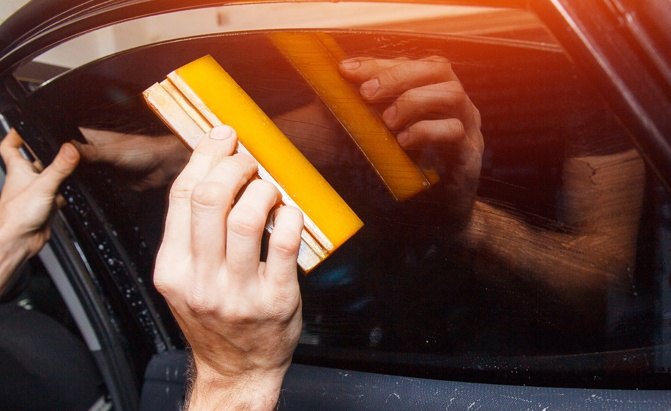

















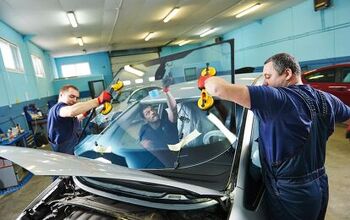




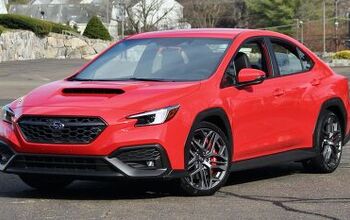







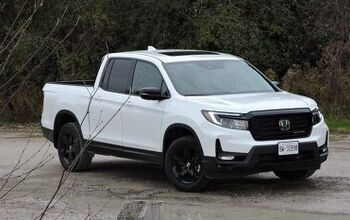

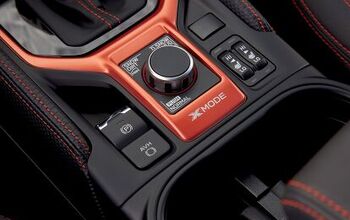

Comments
Join the conversation